Places Visited:
British Columbia: Creston and a drive up PH 3A
from Creston to the eastern Ferry Landing at Kootenay Bay, including brief stops
in Crawford Bay and the village of artisans.
July 4, 2007.
We
are staying in Pair-A-Dice RV-Park, in Creston, British Columbia. $26.71 gravel
interior roads, FHU including cable. This is an OK RV Park.
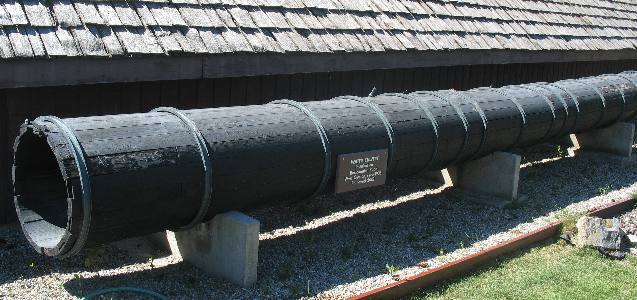
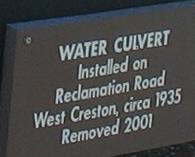
We
stopped by the local museum in Creston, British Columbia. One of the things that
grabbed my attention was this old wooden water pipe. I have always been intrigued
by wooden water pipes. I was surprised by the dates this wooden pipe was in use.
I included the information provided so that you would believe it --- 1935 to 2001.
Now I am really impressed. I had no idea that there were any wooden water pipes
in use in 2001.
After visiting the museum in Creston we decided
to explore north of Creston on PH 3A which travels on the eastern side of what
locals call "the flats". The flats happens to be the valley on both
sides of the Kootenay River that flows through the middle of the valley.
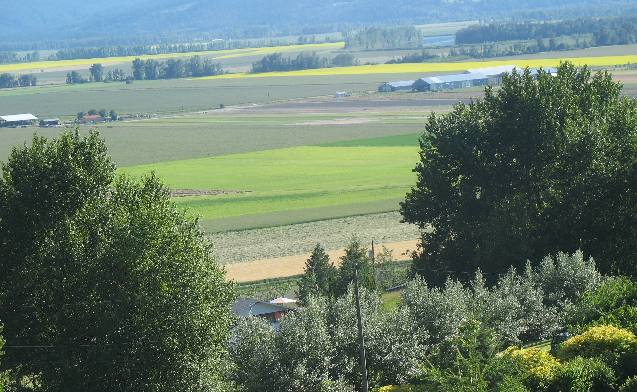
When
white men laid eyes on this valley it was a vast swamp that flooded each spring.
It was the dream, in the 1880's of W.A. Baillie-Grohman, British sportsman and
financier, to reclaim these fertile flats from the annual river floods. His canal
diverted part of the Kootenay River into the Columbia River but it was abandoned.
The
first successful reclamation came in 1893. Now 25,110 acres lie secure behind
53 miles of dikes.
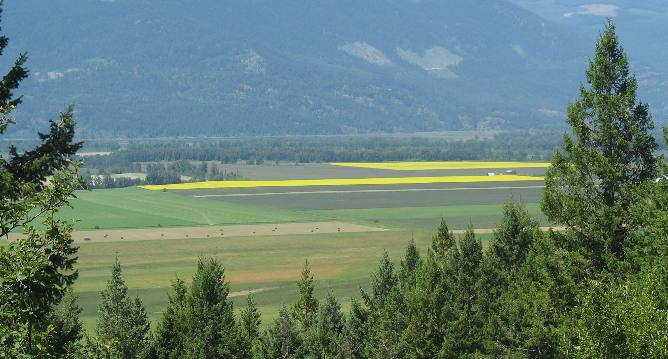
The
Kootenay River still flows through this lovely valley but now it is controlled
between two decks.
From this vantage point we can see fields with
bales of hay, bright green fields of grain and equally bright yellow fields of
canola.
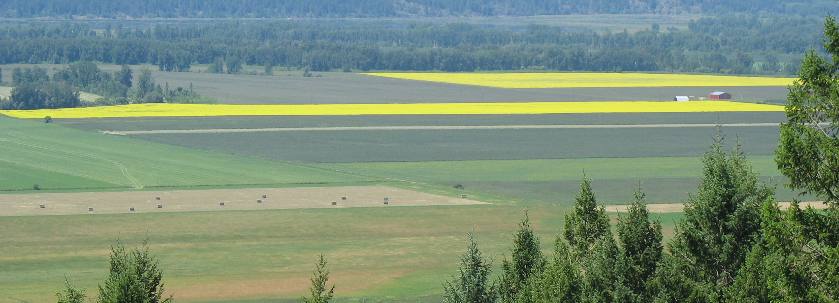

This
appears to be a plant/tree nursery in the "flats".
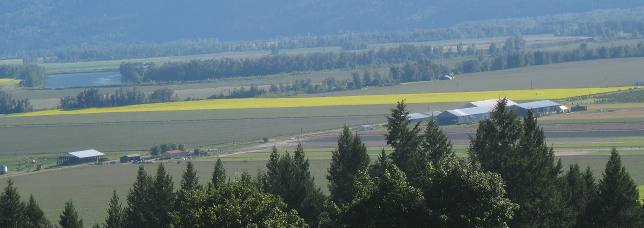
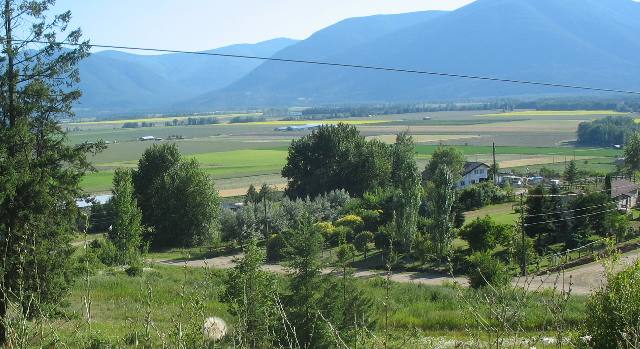
The
views from PH 3A on the eastern shore of Kootenay Lake are stunningly beautiful.
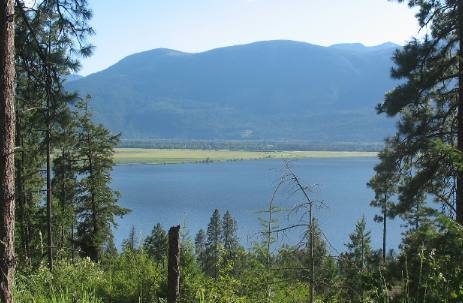
On
our trek north on PH 3A this is where the agricultural "flats" ends
and Kootenay Lake begins.
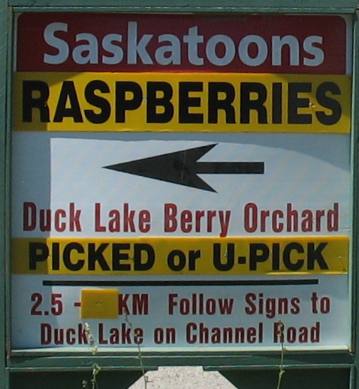
But
before we reached Kootenay Lake we stopped to visit Duck Lake Berry Orchard located
down on the flats.
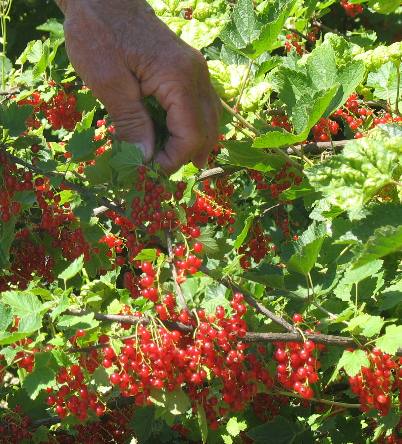
Duck
Lake Berry Orchard specialized in currants, saskatoons and jostaberrys. Saskatoons
were sold as fresh fruit but most of the currants and jostaberrys were made into
jams, jellies and syrups in their own kitchen.
These small red berries are
"red currants".
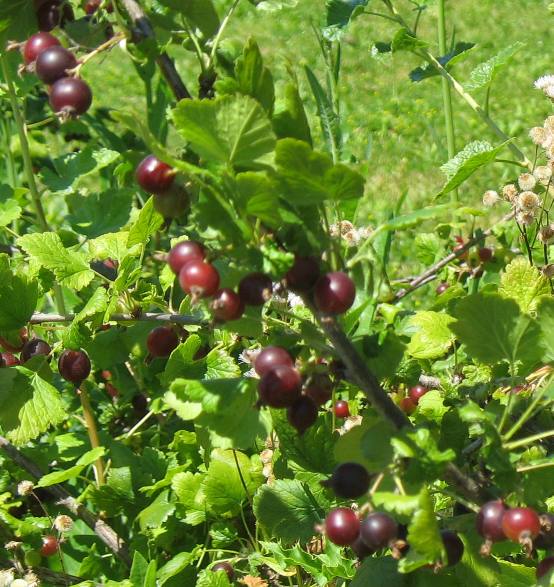
And
these grape size berries are jostaberries.
Jostaberry is a new berry that
is a cross between a gooseberry and a black currant. The cross is a totally new
berry that combines the best qualities of both the gooseberry and currant.
The
Jostaberry has a flavor resembling a gooseberry with just a hint of the black
currant.
One good thing about the plant is the absence of gooseberry thorns.
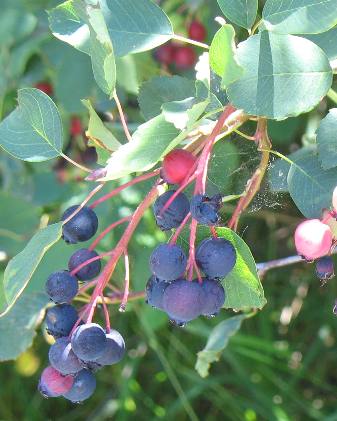
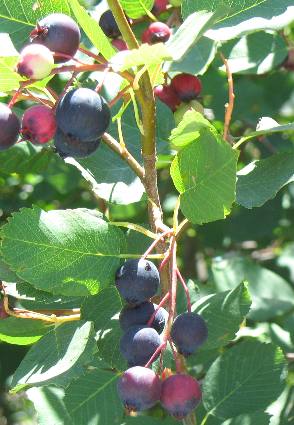
These
are saskatoon berries.
The saskatoon is also known as a saskatoonberry or
Juneberry,
is a type of serviceberry native to many Canadian provinces as well as
the
northwestern and northcentral United States. The plants we saw were 3 to 5 feet
in height.
The small purple berries, ripen in June and July.
The berries
are the size of blueberries and are almost as sweet.
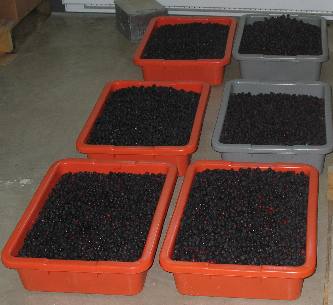
The
berries are consumed fresh as well as made into several
types of foodstuffs,
including pies, jams, wines, cider, beers and
sugar-infused berries similar
to dried cranberry used for cereals, trail
mix and snack foods.
Joyce
took this picture of saskatoon berries being readied for the freezer where they
will remain until made into jams and syrups. These berries were picked by workers
this morning. They only pick berries in the morning, stopping picking operations
when the berries get warm.
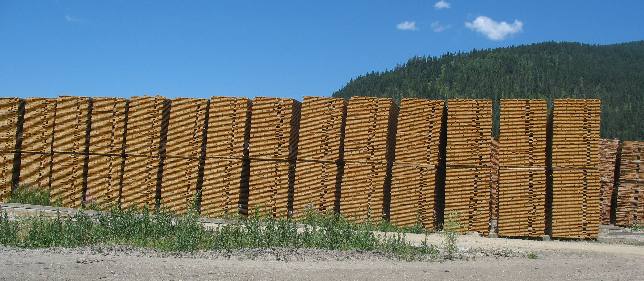
This
lumber mill was down the street from the berry orchard.
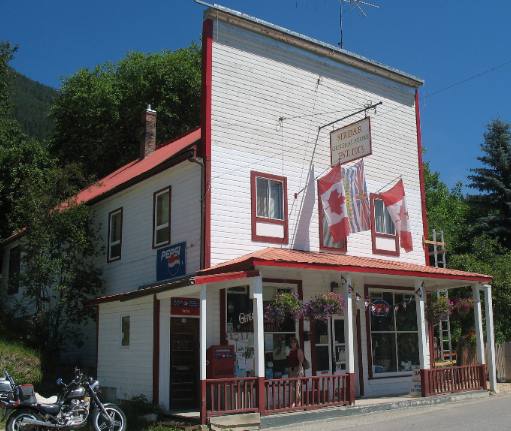
We
stopped by this old country store in one of the small communities north of Creston.
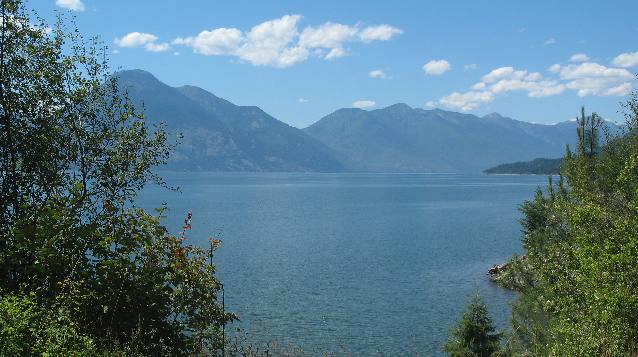
Joyce
and I discussed what this part of the drive reminded us of and several places
came to mind. First of all it reminded us of an Alaskan cruise up the inland passage.
The water and mountains remind us of that cruise.
The scenery
especially on the side of the lake where we are driving reminds us of driving
the California coast south of Monterey. There are a lot of up and downs and many
twists and turns just like the drive south of Monterey.
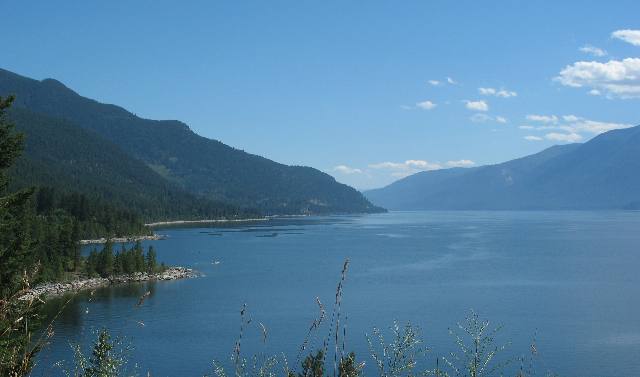
Kootenay
Landing served as the western terminus of the Canadian Pacific Railway's Crowsnest
Pass route between 1898 and 1931. An extensive trestle system, large steamer docks,
and rail car transfer slip joined land to water transportation. A fleet of sternwheelers
and tugs met the trains here, transporting ore, coal, lumber, mail and passengers
to the West Arm of Kootenay Lake where the rail line continued westward.
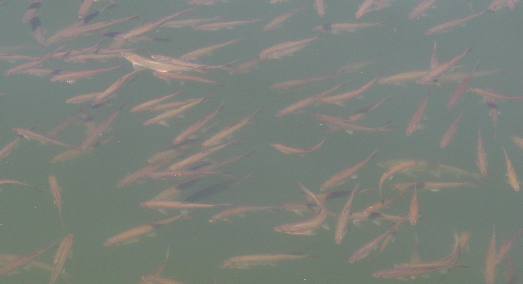
We
stopped at Kuskanook Harbor where these fish were milling about in the harbor.
There were thousands of these fish all about 8 inches long. Does anyone know what
these fish are?
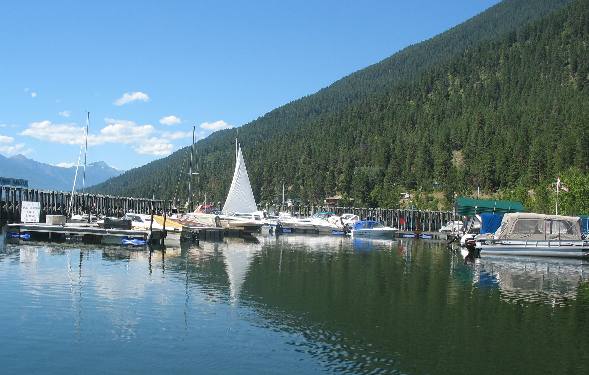
Kuskanook
Harbor is a nice harbor complete with boat ramp about 20-miles north of Creston.
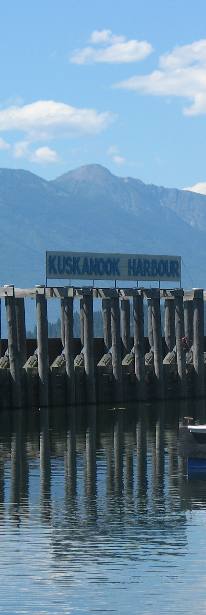
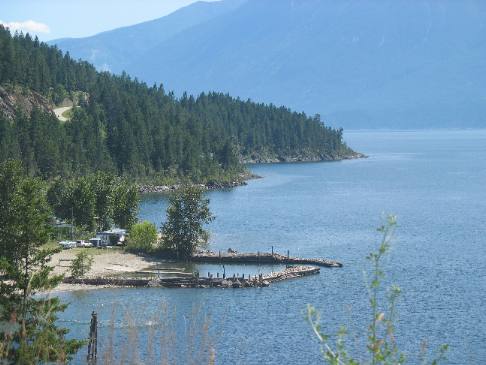
The
views from PH 3A are totally awesome as we continue our journey up the east side
of Kootenay Lake.
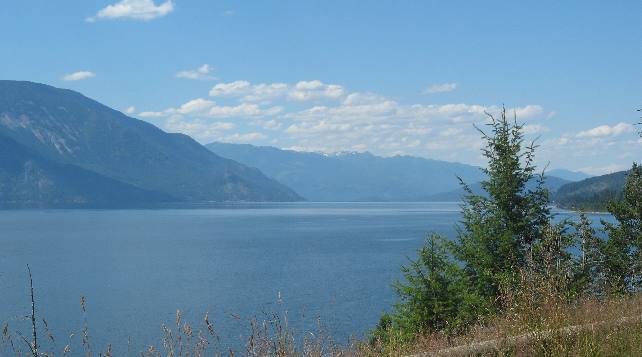
Someone
from the area told us this drive from Creston to Kootenay Bay along the eastern
shore of Kootenay Lake was the number one motorcycle drive in Canada. I don't
know if that is true but we did see a lot of motorcycles on our drive today.
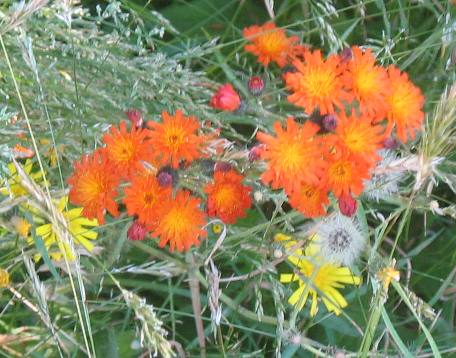
These
flowers were in a roadside ditch in the community of Crawford Bay which is noted
for the artisans that have shops there.
While in Crawford Bay we watched
a modern day blacksmith making a variety of parts, a glass blower creating expensive
colorful glass works of art, a weaver plying his trade. We skipped a pottery shop
and a shop where they were manufacturing brooms.
The broom manufacturing
would have been interesting, I am sorry that we missed that.
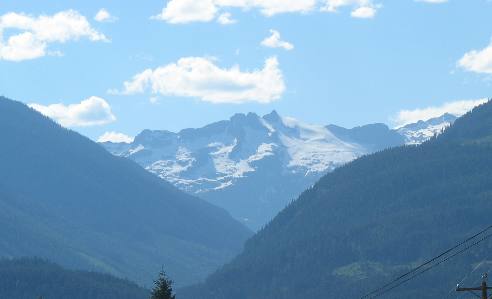
The
landing for the free ferry across Kootenay Lake is located only a few miles north
of Crawford Bay. There is one peak of this snow covered mountain just before arriving
at the ferry landing.
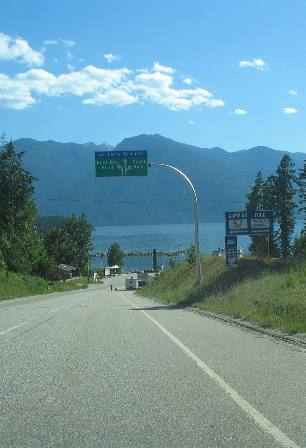
This
is the descent to the ferry landing and that is the ferry visible in the picture
on the right.
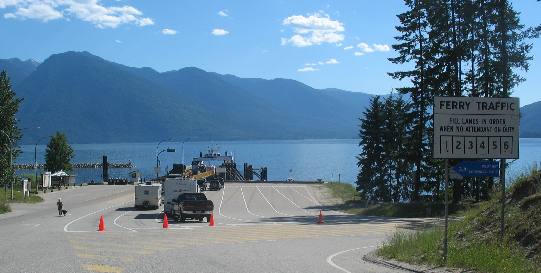
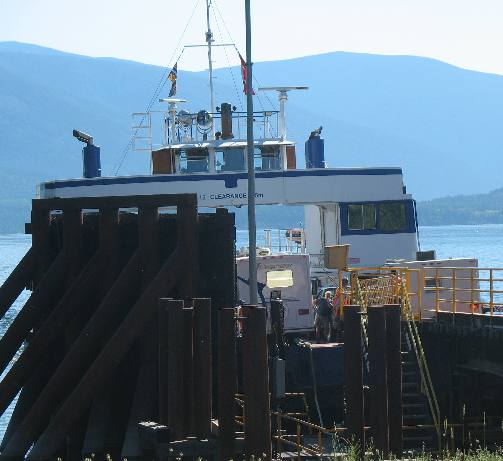
You
can see several motorhomes in the process of boarding the ferry for the 45 minute
ride across the lake.
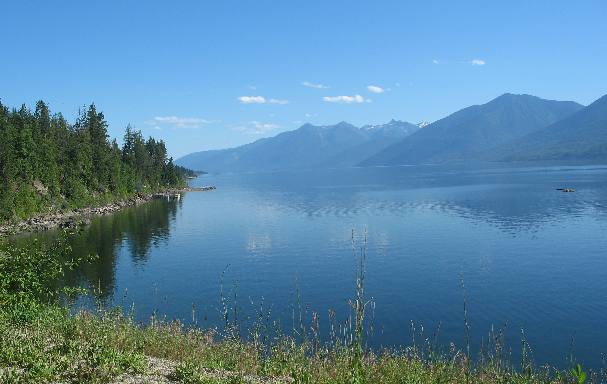
From
one end of Kootenay Lake to the other views like this are standard.
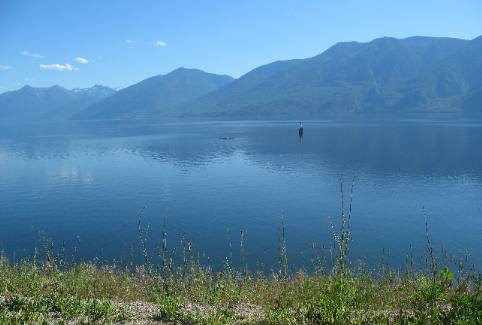
A
good, full service, RV-Park is available in Crawford Bay.
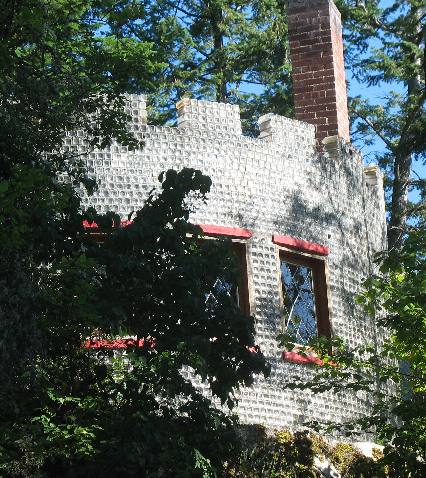
This
is the "glass house" located about 25-miles north of Creston. It was
constructed in 1959 out of 500,000 embalming fluid bottles.
We took this
picture from the road. For some reason seeing a house constructed out of embalming
fluid bottles did not interest either of us.
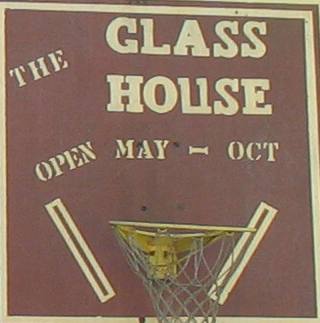
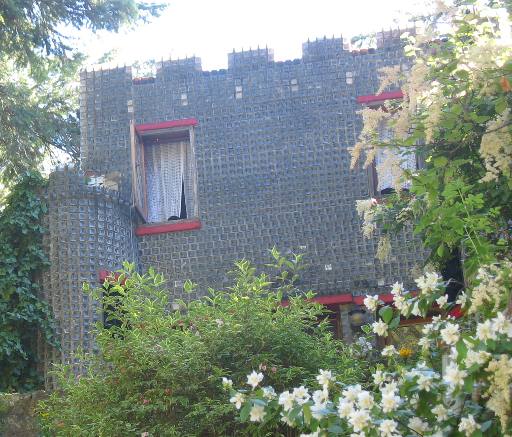
And
one last look at the famous glass house.
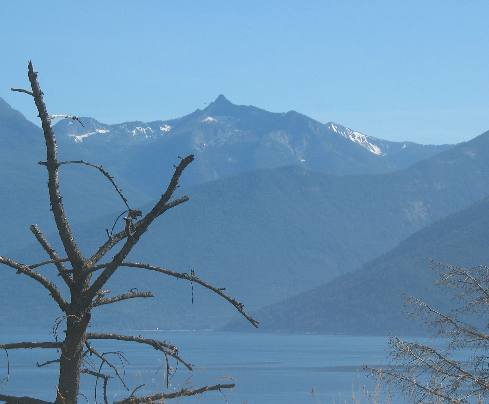
The
beauty is truly stunning around every turn in the highway.
Until
next time remember how good life is.
Mike & Joyce Hendrix